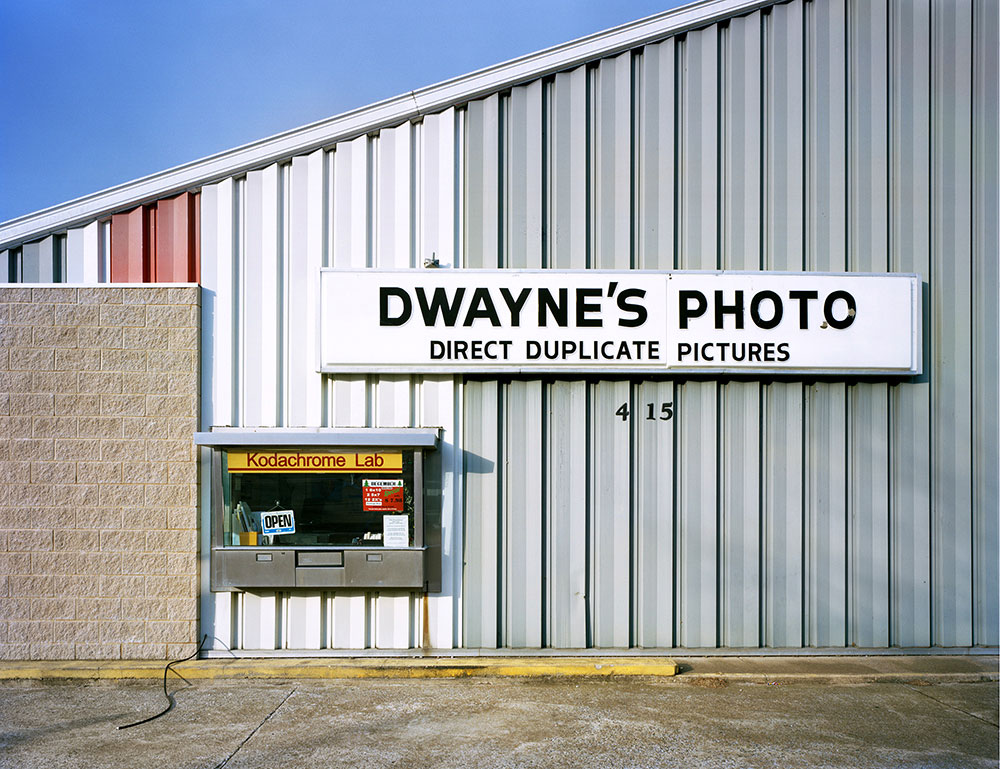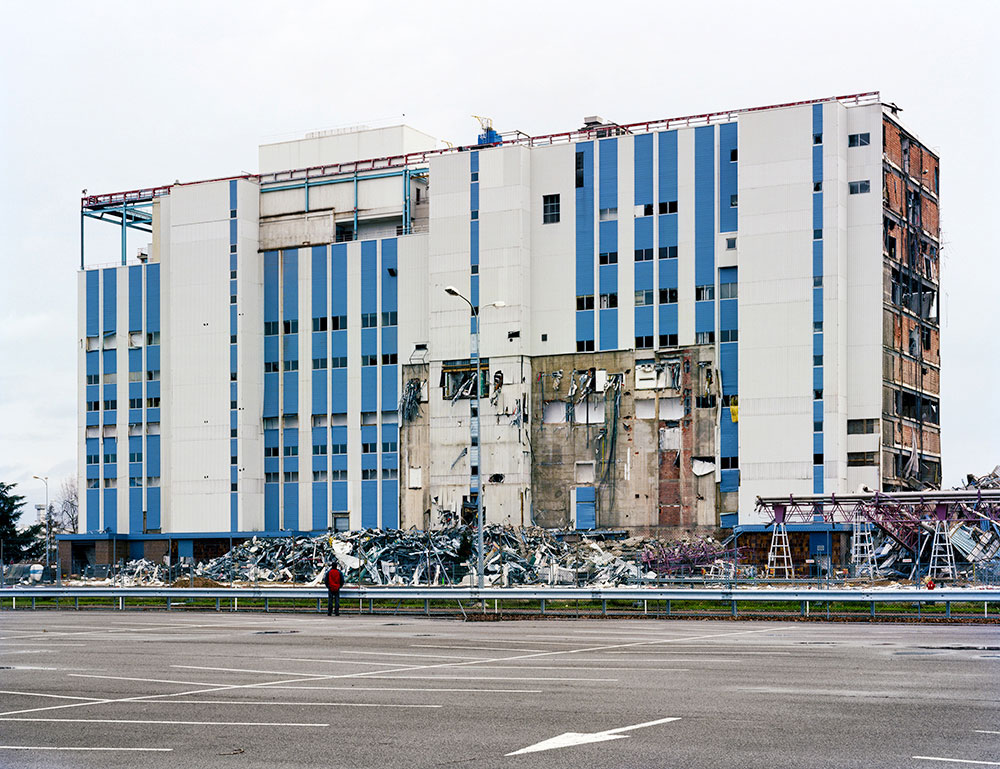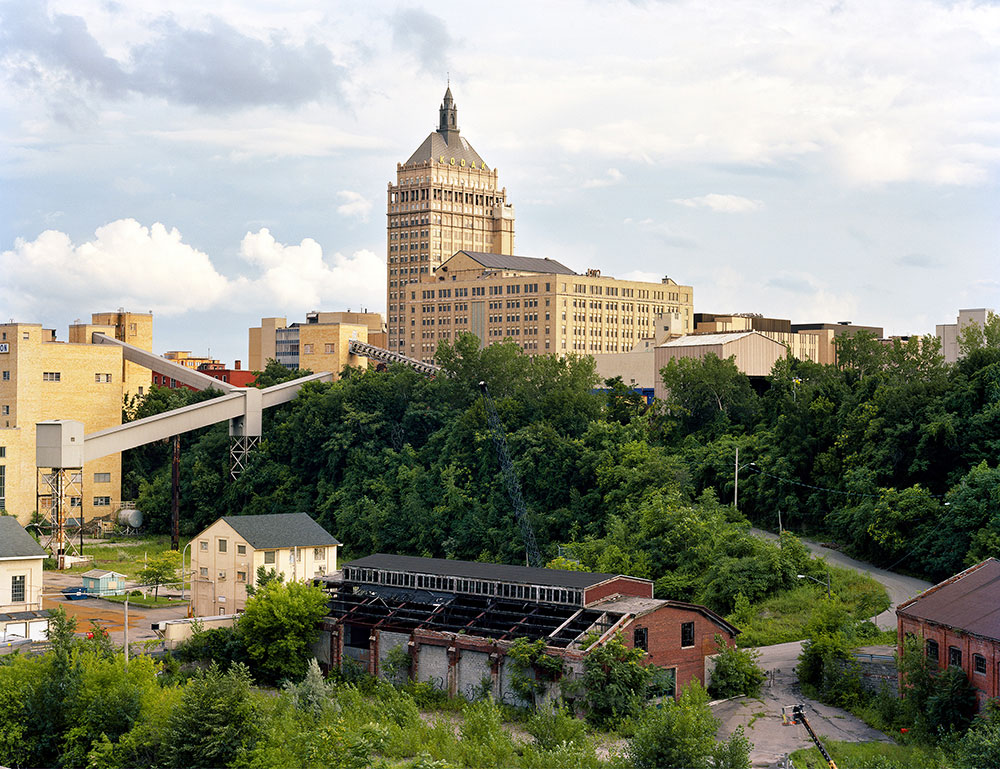 The Disappearance of Darkness: Photography at the End of the Analog Eraby Robert Burley
The Disappearance of Darkness: Photography at the End of the Analog Eraby Robert Burley
ART PHOTO STUDIO: CLOSED DUE TO RETIREMENT, TORONTO, ONTARIO 2005
Throughout the twentieth century, professional photographers were those with the specialized knowledge and equipment required to create artful photographic images that were above and beyond the ability of any amateur. Theirs was a respected trade that combined knowledge of both technology and art, and their services were in constant demand. Ironically, while most professional photographers spent years learning their craft, they knew little about how their materials were made, and were dependent on a photographic industry over which they had no control. Just as the skill involved in making photographs retained an aura of mystery and magic, the production of films and papers remained a closely guarded secret held by a few profit-driven corporations.
With the decline of traditional photographic methods, the commercial photographic studio, a mainstay in every town around the world, began to fade into history. The Art Photo Studio, established in 1951, stayed in business for over fifty years; it was converted into an upscale pâtisserie in 2008.

DWAYNE’S PHOTO LAB, PARSONS, KANSAS DECEMBER 30, 2010
Much of photography’s early history took place in villages and small urban centers off the beaten track, so it was not surprising that the end of the medium’s longest running product, Kodachrome film, would play itself out in Parsons, Kansas, a small town in the American Midwest—a three-hour drive from the closest international airport. A family-run business, Dwayne’s was the last photography lab in the world to process the iconic transparency film that had defined the standard for color photography. Invented by two classical musicians, Leopold Godowsky Jr. and Leopold Mannes, Kodachrome was first introduced by Kodak in 1935 as a movie film, but soon became indispensable for still photographers who sought to record their world in color. Over the course of its seventy-five-year life, Kodachrome became a part of popular culture: figuring in the music of Paul Simon, in the name of a national park in Utah, and in the countless color photographs that appeared on the covers of every major magazine, shot by some of the world’s most renowned photographers.
Unlike other color films, Kodachrome required specialized equipment and processing chemistry, that was discontinued by Kodak in 2009. One year later, on an unseasonably warm day at the end of December, Dwayne’s accepted Kodachrome for processing for the last time, with a cut-off time of noon. Film arrived from around the world by mail, courier, and in person, while overwhelmed lab employees struggled to keep up with the high volume. Concerned that they might not have enough chemistry to process the thousands of rolls that came in that day, the lab manager called the Kodak Company to assist with calculations in relation to their remaining stock. He quickly discovered that the lab was short of one crucial chemical component: the magenta dye. Kodak was able to find the last available container of this dye — one that had been used in the research labs — and shipped it to Parsons. The last rolls of film received that day were run through the Kodachrome processor at 1:30 p.m. on Tuesday, January 19, 2011.

AFTER THE FAILED IMPLOSION OF THE KODAK-PATHÉ BUILDING GL, CHALON-SUR-SAÔNE, FRANCE DECEMBER 10, 2007
Chalon-sur-Saône, located south of Dijon in Burgundy, France, played an important role in the history of photography: it was here in 1827, that inventor Joseph Nicéphore Niépce created the first surviving photograph. Tourists can still visit the third-floor laboratory in the nearby village of Saint-Loup-de-Varennes, where Niépce successfully fixed the image of his camera obscura onto a pewter plate, using chemicals mixed with bitumen of Judea.
It was only fitting that Kodak would establish a manufacturing facility in Chalon, the city that claimed to have invented photography. They did so in 1961, by which time Niépce’s invention had grown into a global phenomenon. The plant seen on the facing page, operated by Kodak-Pathé, produced a variety of film products for nearly fifty years. When Kodak announced the facility would be closed in 2006, it was a shock not just to the city’s economy, but its citizens as well. On a gray December morning in 2007, crowds gathered to watch the death of photography in its birthplace. Photography refused to go quietly. After the demolition team had set off the 950 kilograms of explosives placed at the base of the building, only a portion of the structure came down. An embarrassed group of Kodak executives were forced to schedule a second attempt in February of 2008, which successfully ended the company’s presence in Niépce’s city.

VIEW OF KODAK HEAD OFFICES FROM THE SMITH STREET BRIDGE, ROCHESTER, NEW YORK 2008
At its peak in the 1980s, Kodak employed more than 60,000 people in Rochester, New York —more than a quarter of the city’s population at the time. When George Eastman founded the Eastman Kodak Company in 1892, it quickly became an American business legend, ultimately making Rochester’s economy the second largest in the state after that of New York City.
Eastman not only provided jobs in Kodak Park, but he also had a hand in every aspect of Rochester’s civic life. He founded its illustrious music and dental schools, endowed its university, and created the Community Chest (later known as the United Way). Over the course of the twentieth century the city became known as “Smugtown,” in part because its economy seemed invincible. Depressions and economic downturns had no significant effect: people always needed film. To be employed by Kodak meant having a lifetime job with a good salary and benefits. George Eastman was one of the first businessmen in America to grant employees dividends and profit sharing. “Bonus Days” were well-known to retailers in Rochester, who extended store hours so Kodak employees could spend their annual windfalls.
The first rumblings of trouble for Kodak came in the early 1990s, when the company began to face stiff competition from overseas, and embarked upon disastrous forays into new products and businesses. By 2000, the digital revolution and the subsequent huge drop in demand for traditional films and papers had pushed the company into economic free-fall. By 2011, Kodak employed fewer than 7,000 people in Rochester, and was struggling to transform itself into a digital company.
There are two Kodak building complexes in Rochester: the company’s head offices in Kodak Tower located in the downtown core on State Street; and the manufacturing, research, and warehousing operations in Kodak Park located in the northwestern part of the city. Upon its completion in 1916, Kodak Tower was Rochester’s tallest building. When, in 1929, he saw the plans for the new Times Square Building, also to be located in downtown Rochester, George Eastman added three floors and a spire to Kodak Tower so that the company’s headquarters could maintain its status as the city’s tallest structure.
http://darkness.robertburley.com


The Disappearance of Darkness by Robert Burley: ‘he forgoes sentimentality in favour of a detached approach to landscape and interior’. Photograph: Robert Burley
There have been various valedictory photographic essays about the passing of analogue photography over the past decade, but none quite as extensive as Robert Burley's 10-year project to chronicle the disappearance of the sites where film was produced and developed. "This book is my own march backwards into the future," he writes in the introduction. "It tells the story of an industry that was obliterated by the creative destruction of the digital age."
The things that for so long defined photography already seem quaint, and the places that produced those things – the factories, the processing labs – are lying empty or have been transformed or demolished. As curator Alison Nordstrom points out in her understated "On Endings", one of a number of essays accompanying the book, chemical photography ended, in TS Eliot's words, "not with a bang but a whimper".That industry defined Burley's creative process throughout most of his life, as it did all the major photographers of the 20th century and the countless amateurs who recorded their lives on film and in home movies. No doubt digital technology will record and define this century just as analogue photography did the last. What will disappear, though, is the physical manifestation of the photographic process, not just the print, but the negative, the contact sheet, and, with it, a certain process of often painstaking creativity and chemical transformation.
To a degree, Burley's book reflects this sudden, silent death, but his style forgoes sentimentality or nostalgia in favour of a detached, sometimes clinical, approach to landscape and interior. He photographs things as they are or, to be more precise, as they were. What is striking about his images of the Kodak Canada plant in Toronto, where he lives, for instance, is the futuristic anonymity of the building, both inside and out. In a pristine administrative area, an employee's fleece hangs on a slim pillar like a flag of defeat, while the absence of human activity is almost palpable. The exception is one large-scale photograph, taken from above, in which he captures a spread of small figures leaving the car park after an employee meeting that took place during the last few days of production.
In Britain, he photographed in and around the Ilford Photo company in Mobberley, Cheshire, which had just celebrated 125 years of producing film when it was declared bankrupt in 2004. A container bearing the faded Ilford logo, which echoed its colour range, already looks incongruous. (Against the odds, Ilford somehow survived with a limited workforce by producing a small supply of black-and-white photographic paper to meet a niche market. Its survival was ensured by Kodak's announcement that it was to cease producing that same paper.)
Burley also visited, and photographed, the Impossible Project in the headquarters of the rundown Polaroid manufacturing plant in Enschede in the Netherlands, another business that rose from the ashes to serve a small but loyal consumer base that continues to use Polaroid cameras.
The Disappearance of Darkness is a book, then, about materiality and its decline. It is already a kind of elegy. "We can hold this book in our hands and turn the pages for our children," writes Nordstrom, "and tell them what we remember of a different time from theirs."
http://www.guardian.co.uk/books/2012/dec/09/disappearance-darkness-robert-burley-review

No comments:
Post a Comment